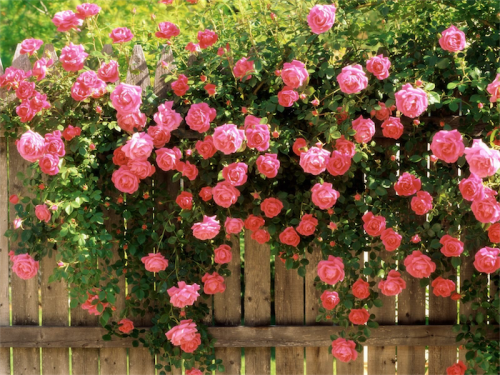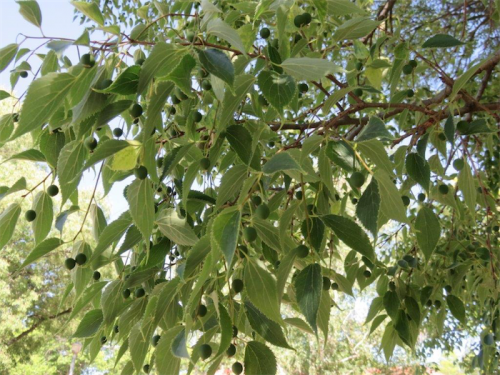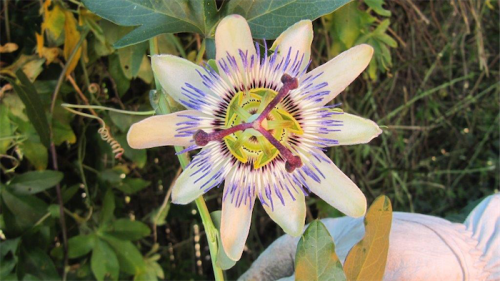
Quoting advice in “The Canberra Gardener”, pruning at this time will usually provide an autumn floral show about 50 days later.
Always water at the base of roses, not the foliage and always in the morning. Watering in the evening leaving the foliage wet combined with a warm night encourages mildew and black spot.
Some roses are more susceptible to mildew more than others, so an effective organic spray is one part full-cream milk (none of this Lite stuff) mixed with 5-9 litres of water. Spray under the leaves as well as on top and on the ground under the rose, once again in the morning.

These seedlings are either carried in when the cockatoos eat the berries or seeds literally blown in from trees in Knox Street.
These extremely tough trees were planted as street trees all over the older suburbs. It took many years for our landscape planners to realise the error of their ways.
While these trees are now on the ACT government’s environmental weeds list, it is still almost impossible to get permission to have a single tree removed in one’s own backyard.
I pull up dozens every week. Once they get established they are very hard to get out. Once they grow to, say, 40mm-50mm the only way is to cut them close to the ground and use an old paintbrush and apply undiluted glyphosate on the cut immediately.

The leaves of the wild passionfruit are a dull grey and 3-5 fingered, whereas the Nellie Kelly is a large, glossy leaf.
The wild vine can grow as thick as my wrist and climb to the top of gum trees in a very short time.
To get rid of this is the same as above with undiluted glyphosate, the strongest you can buy. It’s no good trying to dig it out as it grows from the tiniest part left in the ground.
Jottings…
- When temperatures exceed 30C, it’s recommended that drip systems are turned on for two hours once a week; say, one hour in the morning and one hour in the evening. Water follows water and it will penetrate to the root zone more effectively.
- Not sure if this is enough? Dig a hole not too close to the root zone of plants, but near the drip line to check if water has penetrated the roots.
- It’s still not too late to lift spring bulbs, such as daffodils, if they are in the wrong place, overcrowded or simply not doing well and possibly planted too deep?
- Water restrictions still apply, despite our new big dam. Sprinklers, especially lawn sprinklers, may not be used between 9am and 6pm. There is no restriction on drip systems, although it is best not to water in the heat of the day.
Who can be trusted?
In a world of spin and confusion, there’s never been a more important time to support independent journalism in Canberra.
If you trust our work online and want to enforce the power of independent voices, I invite you to make a small contribution.
Every dollar of support is invested back into our journalism to help keep citynews.com.au strong and free.
Thank you,
Ian Meikle, editor




Leave a Reply